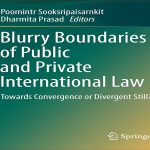- عنوان کتاب: Natural Language Processing with TensorFlow
- نویسنده: Thushan Ganegedara
- حوزه: پردازش زبان طبیعی
- سال انتشار: 2022
- تعداد صفحه: 515
- زبان اصلی: انگلیسی
- نوع فایل: pdf
- حجم فایل: 17.3 مگابایت
این کتاب به نیاز مهم برای توصیف چگونگی حل مشکلات پردازش زبان طبیعی (NLP) با استفاده از پشتههای NLP مبتنی بر TensorFlow میپردازد. یادگیری عمیق اخیراً NLP را متحول کرده است. بسیاری از مشکلات NLP صنعتی و دانشگاهی که نیاز به کار زیادی از نظر طراحی ویژگیهای جدید، تنظیم مدلها و یافتن بهترین رویکرد مدلسازی (CRF، SVM، روشهای بیزی و غیره) داشتند، اکنون میتوانند توسط دانشمندان NLP به طور قابل توجهی حل شوند. زمان کمتر همچنین، روشهای جدید مبتنی بر یادگیری عمیق معمولاً مدلهای بسیار دقیقتری نسبت به روشهای سنتی NLP تولید میکنند. مشکل بزرگ این است که چگونه میتوان این مدلها را در یک محیط تولید مدرن با پارامترهای عملیاتی مانند تأخیر و توان عملیاتی، هزینههای ابری و کیفیت عملیاتی (تایم آپدیت و غیره) کار کرد. محیط TensorFlow برای حل این مشکلات هنگام اجرای مدل های NLP طراحی شده است. در این کتاب، نویسنده اصول TensorFlow و Keras، یک رابط مبتنی بر پایتون برای TensorFlow را آموزش میدهد. سپس، بخش اعظم کتاب، از فصل 3، Word2vec – آموزش جاسازی کلمات، به بعد، بر روی مسائل NLP و حل آنها با استفاده از TensorFlow متمرکز شده است. این کتاب ارائه می دهد: • دانش روش های NLP با جزئیات خوب، از تعریف آنها تا روش های مختلف ارزیابی • اطلاعاتی در مورد کتابخانه های TensorFlow، Keras، و Hugging Face که ابزار قدرتمندی برای ساخت راه حل های NLP هستند. • درک معماری های عصبی، که عبارتند از برای ساختن مدلهای بهتر، با ساختن معماریهایی برای وظایف خاصی که خواننده در تمرین خود با آنها مواجه خواهد شد، مهم است. نویسنده فرآیند ساخت تعبیهها و دیگر نمایشهای برداری را که اساس اکثر روشهای مدرن یادگیری عمیق NLP هستند، توصیف میکند. نویسنده همچنین معماریهای محبوب شبکههای عصبی مانند شبکههای عصبی تکراری، شبکههای عصبی کانولوشنال، شبکههای حافظه کوتاهمدت طولانی و معماریهای مبتنی بر ترانسفورماتور را به تفصیل توصیف کرده و کاربرد آنها را در حل وظایف مختلف NLP، مانند طبقهبندی جملات، نشان میدهد. شناسایی موجودیت، تولید متن، ترجمه ماشینی، تولید عنوان تصویر و موارد دیگر.
This book addresses the important need for describing how Natural Language Processing (NLP) problems can be solved using TensorFlow-based NLP stacks. Deep Learning revolutionized NLP recently. Many industrial and academic NLP problems that required a large amount of work in terms of designing new features, tuning models, and finding the best modeling approach (CRF, SVM, Bayesian methods, etc.) can now be solved by NLP scientists in a significantly smaller amount of time. Also, the new deep-learning-based methods typically produce much more accurate models than traditional NLP methods. The big problem is how to make these models work in a modern production setting with operational parameters such as latency and throughput, cloud costs, and operational quality (uptime, etc.). The TensorFlow environment is designed to solve these problems when running NLP models. In this book, the author teaches the fundamentals of TensorFlow and Keras, a Python-based interface for TensorFlow. Then, the bulk of the book, from Chapter 3, Word2vec – Learning Word Embeddings, onward, is focused on NLP problems and solving them using TensorFlow. This book provides: • A knowledge of NLP methods in good detail, from their definition to various evaluation methods • Information about TensorFlow, Keras, and Hugging Face libraries, which are powerful tools to build NLP solutions • An understanding of neural architectures, which is important to build better models, by building architectures for specific tasks that the reader will encounter in their practice. The author describes the process of building embeddings and other vector representations that are the basis of most modern deep learning NLP methods. The author also describes popular Neural Network architectures, such as Recurrent Neural Networks, Convolutional Neural Networks, Long Short-Term Memory networks, and Transformer-based architectures, in detail and shows their application in solving various NLP tasks, such as sentence classification, named entity recognition, text generation, machine translation, image caption generation, and more.
این کتاب را میتوانید بصورت رایگان از لینک زیر دانلود نمایید.


































نظرات کاربران